A motorized lazy Susan. When the client presses a switch, it rotates 1/4 or 1/2 turn to present the client with the next item of interest.
Rehabilitation Engineering Design Projects
as part of senior design at UNC
Sensory Play Gym: A Device That Provides Sensory Stimulation To a Child In a Side-Lyer
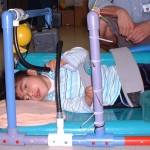
A sensory play gym that allows a child in a side lyer to access switches and toys that provide sensory stimulation.
Talking Dots
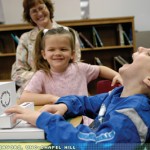
An electronic game that provides audible feedback when the client types a letter in Braille.
The Sound Wall: Muscle Strengthening and Sensory Stimulation
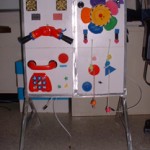
A portable “wall” of toys and devices that promote muscle strengthening and motor control.
A tablet for developing handwriting skills
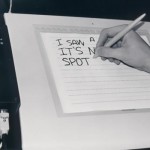
A writing tablet that provides feedback during handwriting and helps the clients develop handwriting skills.
C-PAD: Audible item counter for vocational training
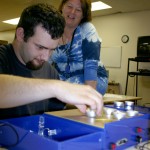
This counter is designed to introduce students to the process of template counting utilized by many vocational sites, as well as increase their personal understanding of numbers. As the user places a “widget” on the template, it provides them with the current count.
Assistive Play Station
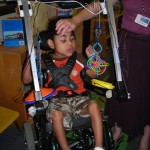
This Play Station enables the client, who is four years old, to play by himself, exploring different textures, both in the classroom and while he stays with his mother at work. Since the client has visual impairments, the Assistive Play Station is designed to provide him with auditory stimuli and provide physical therapy by strengthening movement in his arms, especially his left hand.
T.O.Y.S.: Technology to Offer Youth Self-reliance
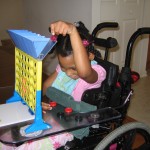
These assistive devices enable our client to blow bubbles and play the game of Connect Four. This enables our client to interact with other children during leisure time, while helping to improve strength and motor control.
Trace Aid
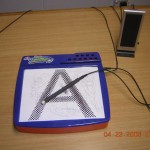
Tracing is an important skill that is a precursor to learning handwriting. This device to encourages children with autism to practice tracing, by providing musical feedback when they are tracing properly.

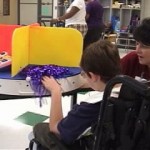
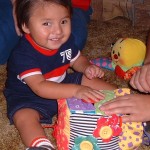
University Operator: (919) 962-2211 | © 2024 The University of North Carolina at Chapel Hill |